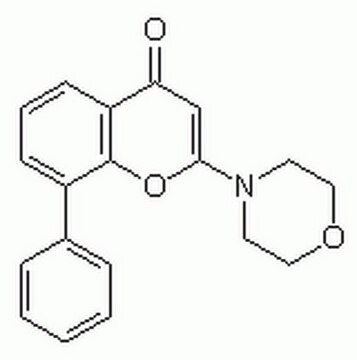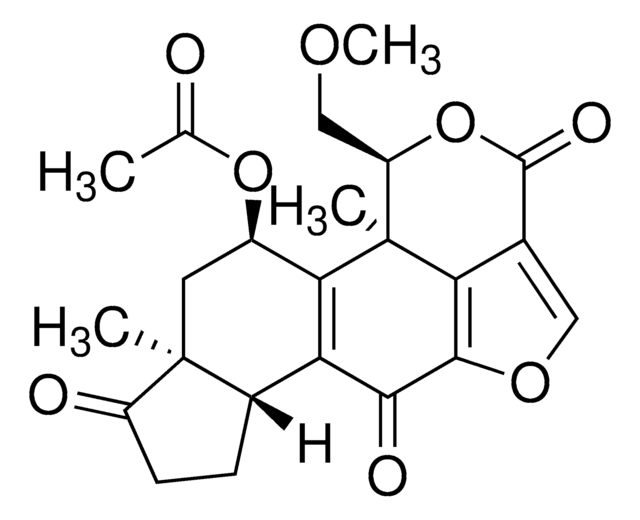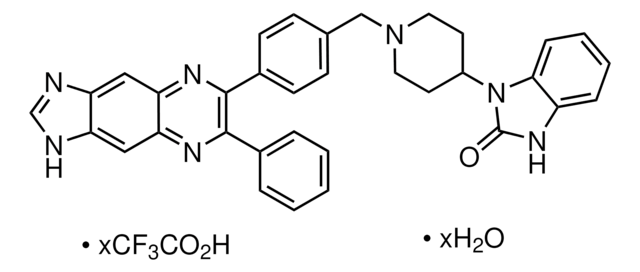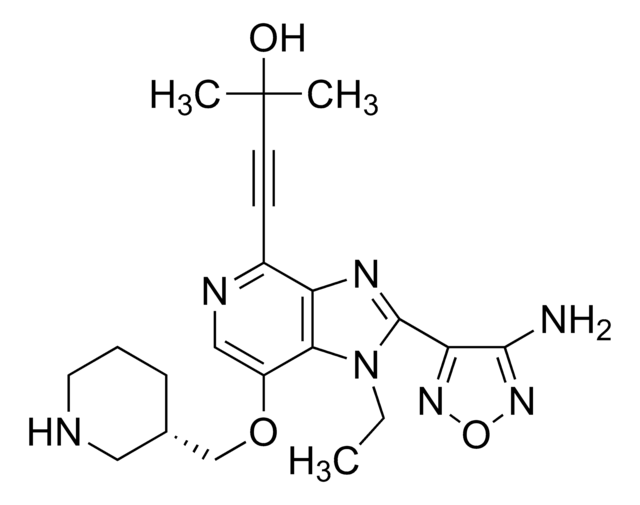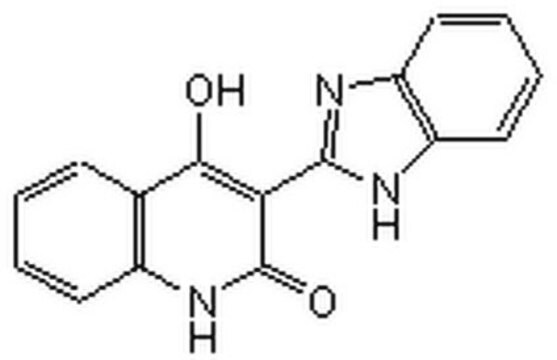L9908
LY-294,002 hydrochloride
from microbial (Staphylococcus roseus), ≥98% (HPLC), solid, PI3K inhibitor
Synonim(y):
2-(4-Morpholinyl)-8-phenyl-1(4H)-benzopyran-4-one hydrochloride
About This Item
Polecane produkty
product name
LY-294,002 hydrochloride, solid, ≥98% (HPLC)
pochodzenie biologiczne
microbial (Staphylococcus roseus)
Poziom jakości
Próba
≥98% (HPLC)
Postać
solid
kolor
white to off-white
rozpuszczalność
DMSO: >5 mg/mL
H2O: insoluble
temp. przechowywania
2-8°C
ciąg SMILES
O=C1C=C(Oc2c1cccc2-c3ccccc3)N4CCOCC4
InChI
1S/C19H17NO3/c21-17-13-18(20-9-11-22-12-10-20)23-19-15(7-4-8-16(17)19)14-5-2-1-3-6-14/h1-8,13H,9-12H2
Klucz InChI
CZQHHVNHHHRRDU-UHFFFAOYSA-N
Opis ogólny
Zastosowanie
- phosphoinositide 3-kinase (PI3K) in human lung cancer cell line
- autophagy in mesenchymal stem cells (MSCs).
- serine/threonine-specific protein kinase (AKT) signaling in fibroblasts and cardiac cells.
Działania biochem./fizjol.
Cechy i korzyści
Kod klasy składowania
11 - Combustible Solids
Klasa zagrożenia wodnego (WGK)
WGK 3
Temperatura zapłonu (°F)
Not applicable
Temperatura zapłonu (°C)
Not applicable
Środki ochrony indywidualnej
Eyeshields, Gloves, type N95 (US)
Certyfikaty analizy (CoA)
Poszukaj Certyfikaty analizy (CoA), wpisując numer partii/serii produktów. Numery serii i partii można znaleźć na etykiecie produktu po słowach „seria” lub „partia”.
Masz już ten produkt?
Dokumenty związane z niedawno zakupionymi produktami zostały zamieszczone w Bibliotece dokumentów.
Klienci oglądali również te produkty
Produkty
We presents an article on Autophagy in Cancer Promotes Therapeutic Resistance
We present an article about how proliferating cells require the biosynthesis of structural components for biomass production and for genomic replication.
Nasz zespół naukowców ma doświadczenie we wszystkich obszarach badań, w tym w naukach przyrodniczych, materiałoznawstwie, syntezie chemicznej, chromatografii, analityce i wielu innych dziedzinach.
Skontaktuj się z zespołem ds. pomocy technicznej